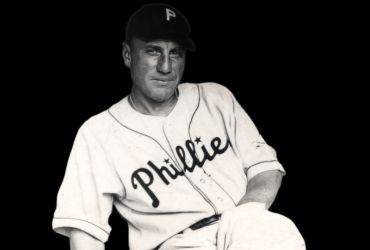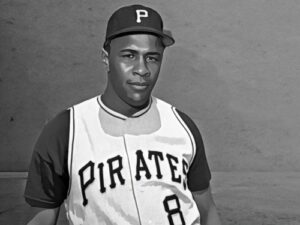When we think of the greatest hitting seasons ever, we think first of the players who set the standards in batting average and home runs. Hit over .400, reach the 60-HR plateau, or win the Triple Crown, and baseball fans and historians won’t hesitate to include you on their lists of the best seasons. However, when I picked the top 20 batting seasons since 1900 for an upcoming book, one of them belonged to a player who led his league only in runs scored, total bases, and doubles. That was Chuck Klein, right fielder of the last-place 1930 Philadelphia Phillies, which had a team batting average of .315 while finishing 40 games behind in the standings. On such a team, how good could Klein have been to crack my top 20? A closer look will demonstrate just how great he was.
1930: Baseball’s Highest-Scoring Year
It is widely acknowledged that 1930 was a greater season for offense than even the homer-happy years of the past decade. Six of the eight National League teams had team batting averages over .300, Bill Terry of the Giants became the league’s last .400 hitter, and Hack Wilson of the Cubs set the major-league record of 191 RBI. Those last two accomplishments took care of Chuck Klein’s chances to win the Triple Crown, even though his numbers in the three categories would have been sufficient to win the Triple Crown in 57 seasons of the twentieth century.
A quick tally of Klein’s statistics from 1930 shows how impressively they rank in the big picture. His 445 total bases are the fourth-highest total ever. He had 250 hits, a figure topped only four times (one of those was Terry in 1930, keeping Klein from leading the league). He drove in 170 runs, second in National League history and tied for eighth all-time. He set two NL records, scoring 158 runs and smacking 107 extra-base hits (both totals exceeded only by Babe Ruth and Lou Gehrig). His 59 doubles tied for seventh all-time and third in the NL. He batted .386, and his .687 slugging percentage cracks the top 50. His home run total was a relatively modest 40, second in the league behind Wilson’s 56 (the only year from 1929-1933 when he didn’t lead the league). Add all this up, and it’s clearly one of the best offensive seasons ever.
The 1930 National League batting race was one of the most torrid on record. Klein’s Philadelphia teammate, Lefty O’Doul, got off to the hottest start in defense of the batting crown he had won in 1929 with a .398 average and 254 hits. Twenty games into the season, O’Doul was batting .500, with nine other regulars over .400. Through 100 at-bats, Klein had a modest .360 mark, but he got hot in mid-May, reeling off a 26-game hitting streak during which he hit .486 (53-for-109) and raised his average to .426 before cooling off a bit.
Klein’s Red-Hot Bat in 1930
After a modest 14-game hitting streak that began in late June, Klein launched another 26-game streak on July 12. Within a week, he climbed back over .400, trailing only O’Doul in the batting race and 15 points ahead of a trio of sluggers-Terry, Babe Herman of the Dodgers, and Riggs Stephenson of the Cubs. As August began, his average stood at .411, leading the league, with O’Doul just over .400 and Terry and Herman just below it.
During that second long streak, Klein batted .434 (49-for-113). Unfortunately, he followed with his only slump of the season, just 21 hits in his next 75 at-bats (.280). Over roughly the same stretch, Terry went 37-for-80 (.463) and took over the lead, with Herman also leapfrogging over Klein and .400 the same week. Klein dropped below .400 on August 16 and never reached it again, though he did reel off another 14-game hitting streak in September. When the dust settled at the end of the season, Terry took the batting crown by hitting .401, Herman’s .393 was second, and Klein finished third at .386, three points ahead of O’Doul.
Klein batted safely in 135 games in 1930, a major-league record he shares with four other hitters (most recently Ichiro Suzuki in 2001). In one stretch, he got a hit in 71 of 75 games. He had four hits in a game seven times, three hits 18 times, and two hits 58 times. That’s 83 multi-hit games in 156 games played, a remarkable number. Of those multi-hit games, 48 came at home, where he was held hitless only five times in 77 games.
“Home” was Baker Bowl in Philadelphia, which brings up the problem some historians have had with Klein’s achievements. Baker Bowl featured a cozy right field with a high tin fence, only 280 feet down the line when Klein played there and barely 300 feet to the power alley. Those dimensions helped Klein record 44 assists in 1930, still the record for outfielders. Baker Bowl was paradise for lefties like Klein and O’Doul, whose averages soared compared to their performances on the road. Here is the home-road breakdown for Klein in 1930:
| Games | AB | R | H | TB | 2B | 3B | HR | RBI | AVG | |
| Home | 77 | 326 | 91 | 143 | 259 | 32 | 3 | 26 | 109 | .439 |
| Road | 79 | 322 | 67 | 107 | 186 | 27 | 5 | 14 | 61 | .332 |
Clearly, Klein’s home stats were spectacular and his road stats merely very good. Double his home numbers and Klein would have set records for runs, hits, total bases, and RBI. It was much the same during the other seasons of the fantastic five-year stretch (1929-1933) which eventually propelled him into the Hall of Fame. Ironically, when he finally won the Triple Crown in 1933, his stats were far from his gaudiest, about what he would have had (.368 average with 28 HR, 120 RBI) if he had played the whole 1930 season on the road.






